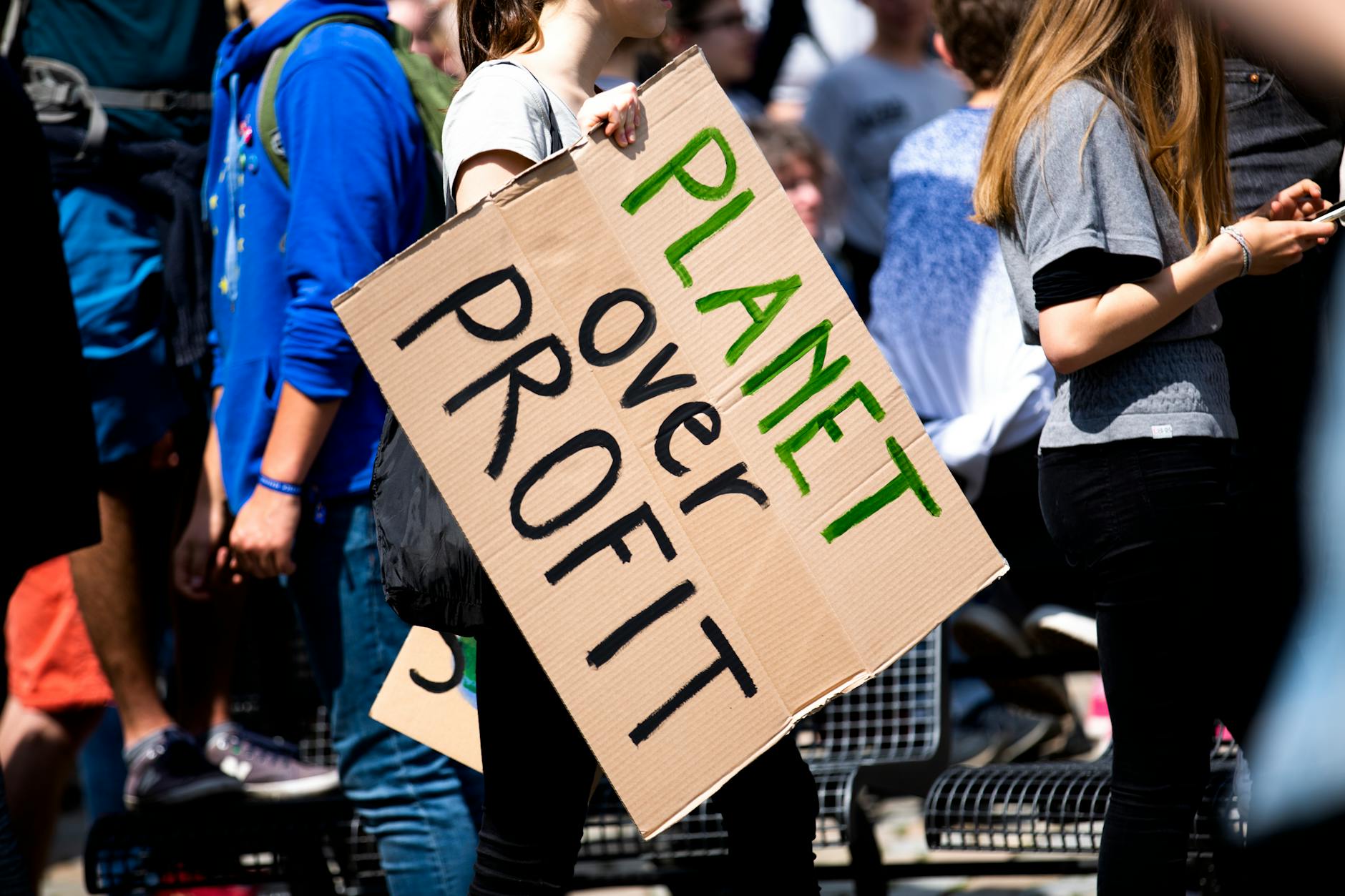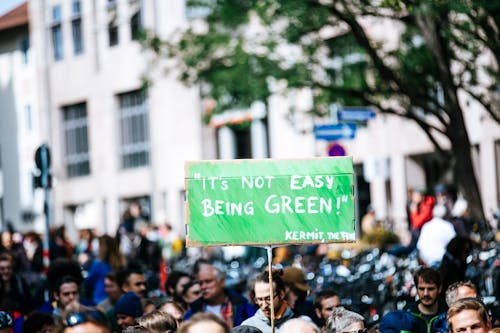Best Policy Mechanisms to Combat Climate Change
When discussing how, as a society, we must address climate change, a common refrain that arises is that individual action, while noble and important, is unlikely to be sufficient on its own to prevent the most severe impacts of climate change. Thus, as we continue running out of leeway before the clock on preventative action runs out, political leaders need to start listening to the climate change movement and enacting policies that will start making the change that’s desperately needed. Among the challenges, though, is turning the enthusiasm and clamoring for action into pragmatic and impactful solutions. Voices all across this topic area and on every spectrum of politics see different climate policy levers as being the right ones to pull at this critical juncture.

So, for activists and politically involved climate fighters, for what policies should they specifically be advocating? That question is quite complex.
Determining the Most Impactful Climate Change Policy Mechanisms and Necessary Policy Priorities
Climate change policy has finally taken a place on the priority of the mainstream population and politicians and candidates looking to represent them. However, climate advocates can no longer support leaders who pass the bar of saying they support climate action, but rather we need to be debating and choosing the specific types of climate change policies that will work most effectively and most quickly to prevent the worst effects of the climate crisis.
To facilitate these discussions and educate our readers and decision-makers alike on the specifics of different climate change policy mechanisms, Solar Tribune has gathered a comprehensive (though not necessarily exhaustive) list of those policy levers. Check back to this page regularly as we continue to conduct interviews with experts in the field in order to add voices of new experts across industries and insights from leaders in this field, and if you want to add your voice to the mix in this collection of ideas, please reach out to us directly.
Recognizing Need for System Changes, No Silver Bullet
It’s critical to first note that no single policy mechanism or lever can be installed that will singlehandedly solve the climate crisis. The silver bullet policy does not exist, and rather a suite of decisions that will work together over time would be necessary to actually create the change the climate community seeks. Rather than a silver bullet, such a portfolio of policies is sometimes referred to as silver shrapnel or silver buckshot, spraying a myriad of impacts and solutions across the global economy.
Recognizing that many experts would be reluctant to consider any single policy option as the single key or best option, some have also opted to be quoted as to the importance of systematic approaches:
“No single measure will solve the climate problem, even though some economists will argue that their type of taxation can solve everything, but due to limitations in the practical implementation of carbon taxes, we need a combination of measures addressing different target groups like citizens and businesses, including regulations, economic instruments, information and advice and more. These types of policy mixes need to be consistent and coherent from the perspective of the transformation or transitions required. Experimentation in new types of policies to advance system transitions is also needed.” Paula Kivimaa
“Too often when thinking about policy mechanisms we get too focused on certain sectors, so as a starting point we need to be looking from a holistic perspective that covers all the different sectors and activities that are generating greenhouse gases, addressing energy, transportation, buildings, agriculture, and industry as a whole system.” – Chad Frischmann, Senior Director of Research & Technology at Drawdown
“We very much believers in systems thinking, systems policy, and systems planning. For example, if you think about a policy to decarbonize electricity supply, it’s also good idea to have policies about changing the demand side at the same time. Because if you change demand and then supply the two impacts multiply together. Another example is with transportation, where if you enact policies to shift to electric vehicles, you can decarbonize the grid at the same time and the total impact will be much larger. Too many people overlook that big picture and focus on components in a linear fashion, but looking at things as a complete system is more impactful.” – Peter Head, Founder & CEO at Ecological Sequestration Trust
Economic Approaches

Many people advocate that the best way to correct for the negative impacts that carbon emissions cause via climate change and other negative effects is to properly price them so those doing the polluting must pay for their emissions. By creating market signals via such economic approaches, taking sustainable action to reduce emissions will become more financially viable than the status quo of emitting carbon and that will create a market-based approach to tackle the climate problem. These economic approaches take a few different forms:
Adjustments to Energy Markets

In the United States, the energy markets are complex and have evolved over many decades to create the utility sector that exists today. Some aspects of those energy markets perhaps made sense when they were developed many years ago, but in today’s world where technology and public focus are advancing so rapidly, one category of approaches to climate change could come from adjusting those energy markets. A few examples of adjustments that may make a difference include the following:
Fossil Fuel Regulation

The burning of fossil fuel is undoubtedly one of the most significant contributors to climate change, whether that comes for power generation, for direct energy use in heating or cooking, in transportation, or otherwise. Rather than working on those end uses, some of the policy strategies explored by climate advocates center on the fossil fuel producers themselves in the form of regulations to minimize the environmental hazards, where and how fossil fuels can be mined, and more:
Shifting Government Support Towards Clean Energy Sources

Regardless of how free the markets are across the United States, in one way or another the government typically does find its thumb on the scale that impacts where public financial support goes. These government support measures include both explicit funds paid out to certain areas of the business as well as implicit support of a system that supports other aspects of the energy industry. By evaluating where government support lies and if progress could be made by shifting it, some of the following measures might be the most effective starting points for climate policy:
- Eliminating Fossil Fuel Subsidies
- Renewable Tax Credits
- Clean Energy Financing Policies
- Decarbonize Government Procurement
Mandatory Renewable Energy Policies

When the end goal is to make sure the energy supply is made up of more carbon-neutral solutions, some would argue that the most effective climate policy tools would thus be mechanisms that require utilities to make such a switch from their fossil fuel generation. These types of policies typically get implemented on a state-by-state basis, and some of the more common ways that state governments look to make renewable energy mandatory include the following:
Transportation Policies

While many people focus on the carbon emissions coming from the power sector when discussing climate change, a large percentage of the issue also comes from transportation and the burning of fossil fuel products to move people and goods. Recent years have seen a rapid advancement in cleaner transportation technologies, and some of the most commonly discussed climate change policy levers involve ways to foster adoption of and improvement upon these cleaner transportation options:
Built Environment Policies

Climate change public policy also often looks at various aspects of the built environment, where people live, where jobs are done, and where goods are manufactured. When totaled up, the built environment is another significant factor of national and global emissions, so finding policy mechanisms that help to reduce the carbon footprint of these areas is critical. Across residential, commercial, and industrial sectors, some of the most effective public policy measures may include the following:
- Building Energy Codes
- Electrify Everything
- Appliance Energy Standards
- Industrial Energy Efficiency Measures
- Industrial Emissions Restrictions
- Creating a Climate Resilient Built Environment
Technological Solutions

When it comes to truly embracing the energy transition, it’s important that the right technology is available first and foremost. While the markets have been good for various technological solutions to climate change, there are further advancements that many have their eye on that would benefit from government support. As such, public policy measures addressing climate change will often include assistance for these, and other, technological solutions:
- Energy Storage Support
- Distributed Energy Resources on the Grid
- Carbon Capture and Storage
- General R&D Funding
Utilizing Natural Resources

Climate change, at its core, is an issue about how we’ve been treating the planet and what the impact of that behavior over many, many years has been. Before the Industrial Revolution, there was always a naturally correcting carbon cycle, which included natural elements like how trees consume and store carbon, and forests full of trees act as the planet’s lungs. When addressing what a future looks like where we appropriately tackle climate change, keeping an eye towards these natural resources and how they can benefit the fight is not to be overlooked:
- Land Use Policies
- Support for Regenerative Agriculture
- Environmental Protection Policies to Benefit the Climate
Bigger Picture Policies

Many advocates in the climate fight argue that addressing the existential climate change issues we’re facing requires more than just considering carbon emissions and how to stop them. Rather, they argue, some bigger picture and societal issues must be seriously analyzed and debated first, and if those implications aren’t integrated into climate change policy then those efforts will always be incomplete. Some of these necessary analyses of society today and what it will look like in the future as we continue to fight climate change include the following:
- Focusing on a Just Transition
- Focusing on Smart Growth
- Improving Education in Climate Change and Sciences Generally




